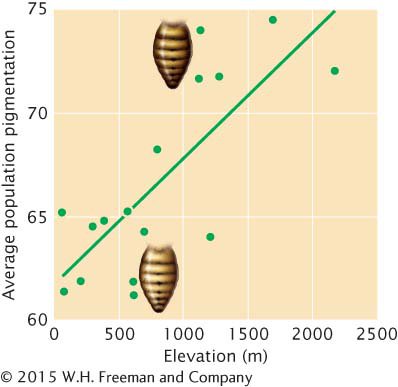Evolution Through Changes in Gene Regulation
One of the challenges of evolutionary biology is understanding the genetic basis of adaptation. Many evolutionary changes occur with relatively little genetic change. For example, humans and chimpanzees differ greatly in anatomy, physiology, and behavior, yet they differ at only about 4% of their DNA sequences. Evolutionary biologists have long assumed that many anatomical differences result not from the evolution of new genes, but rather from relatively small DNA differences that alter the expression of existing genes. Recent research in evolutionary genetics has focused on how evolution occurs through alteration of gene expression.
An example of adaptation that has occurred through changes in regulatory sequences is seen in the evolution of pigmentation in Drosophila melanogaster fruit flies in Africa. Most fruit flies are light tan in color, but flies in some African populations have much darker abdomens. These darker flies usually occur in mountainous regions at higher elevations. Indeed, 59% of pigmentation variation among populations within sub-

493
How did flies at high elevations evolve darker color? Genetic studies indicate that the dark abdominal pigmentation seen in flies from these populations results from variation at or near a locus called ebony. The ebony locus encodes a multifunctional enzyme that produces a yellow exoskeleton; the absence of this enzyme produces a dark phenotype. Sequencing of the ebony locus of flies from light and dark populations found no differences in the coding region of the ebony gene. However, molecular analysis revealed a marked reduction in the amount of ebony mRNA in darker flies, suggesting that the difference in pigmentation is due not to mutations in the ebony gene itself, but rather to differences in its expression. Further investigation detected genetic differences within an enhancer that is about 3600 bp upstream of the ebony gene. Dark and light flies differed in over 120 nucleotides scattered over 2400 bp of the enhancer. By experimentally creating enhancers with different combinations of these mutations, researchers determined that five of the mutations are responsible for the majority of the difference in pigmentation.
These studies suggested that over time, high-